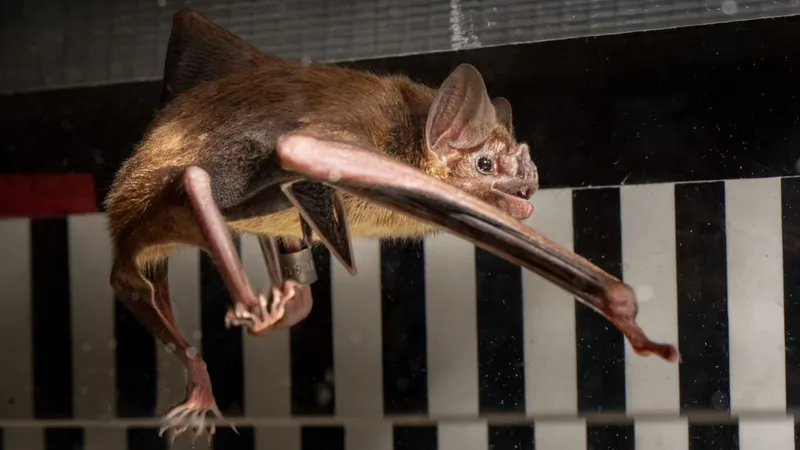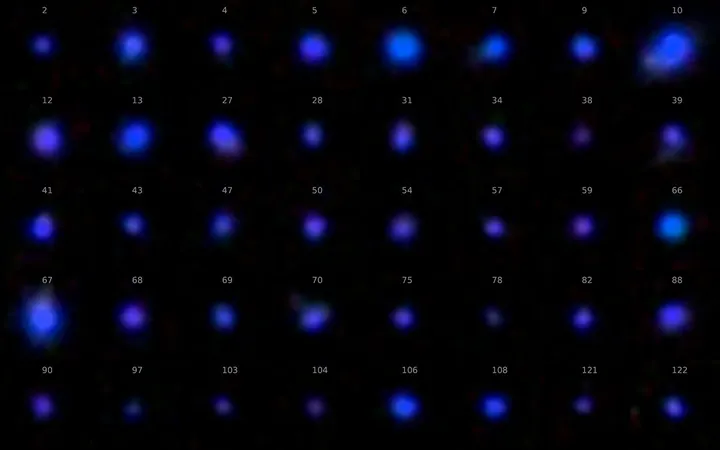
Shocking Discovery: How Vampire Bats Transform Blood into Energy!
2024-11-12
Author: Jia
Groundbreaking Study on Vampire Bats
In a groundbreaking study, researchers have unveiled the bizarre fuel source of vampire bats—a discovery made possible by placing these peculiar creatures on tiny treadmills. Unlike most mammals that rely on carbohydrates and fats for energy, vampire bats have turned to an extraordinary diet of blood, leading scientists to explore the implications of this unique nutritional strategy.
Unique Nutritional Strategies
While most animals, including humans, source energy from diverse diets full of carbs and fats, vampire bats exclusively consume blood, which is starkly low in these essentials yet rich in protein. This has raised intriguing questions about how these nocturnal creatures acquire the energy necessary for their active lifestyles. Lead researcher Kenneth Welch, an associate professor of biology at the University of Toronto, highlighted the disparity: “Given their specialized diet, vampire bats might be utilizing protein as their primary energy source, much like some bloodsucking insects.”
The Vampiric Trio
The vampiric trio of species includes the common vampire bat (Desmodus rotundus), the hairy-legged vampire bat (Diphylla ecaudata), and the white-winged vampire bat (Diaemus youngi). Found mostly in warm regions across the Americas—ranging from Mexico to Trinidad—these bats live in colonies consisting of 20 to 100 individuals and are the only mammals known to be obligate blood feeders.
The Running Bats
Fascinatingly, the common vampire bat is the only species capable of running, employing an unusual bounding gait reminiscent of gorillas. This allows them to effectively chase down their blood meal.
Experimental Findings
The findings from this new study, published on November 6 in the journal Biology Letters, were made possible through meticulous experimentation. Researchers captured 24 adult common vampire bats in the tropical forests of Belize and ensured their last meal had fully digested before the trials. They were then fed cow's blood enriched with isotopically labeled amino acids—glycine or leucine—before being placed in treadmill chambers to analyze their metabolic activity across varying speeds.
Carbon Isotope Analysis
Using advanced infrared laser technology, scientists monitored the carbon isotopes present in the exhaled carbon dioxide to determine how the bats were processing their energy. Remarkably, the data indicated that the bats maintained a consistent ratio of oxygen to carbon dioxide across all treadmill speeds—an anomaly compared to other mammals which typically increase their oxygen consumption with exercise intensity. This pointed to the conclusion that vampire bats primarily relied on amino acids for energy.
Rapid Energy Absorption
Welch noted the astonishing speed with which the bats absorbed the amino acids after feeding: "Within just 10 minutes, we observed labeled CO2 in their exhalation, signifying rapid oxidation of these amino acids in their muscles while they exercised."
Broader Implications
This fascinating metabolic mechanism isn't just unique to vampire bats. Similar studies have showcased how other bloodsucking invertebrates, like the tsetse fly and mosquitoes, derive energy from amino acids as well. Welch remarked, "Our findings draw a parallel between how running vampire bats and these bloodsucking insects depend on their blood meals for intense activity."
Conclusion: Shocking Revelations
This research not only sheds light on the unique adaptations of vampire bats but also raises broader questions about the energy metabolism of other organisms that thrive on blood diets. As scientists continue to delve into the mysteries of these exceptional mammals, we might uncover even more shocking revelations about the animal kingdom’s survival tactics!



 Brasil (PT)
Brasil (PT)
 Canada (EN)
Canada (EN)
 Chile (ES)
Chile (ES)
 España (ES)
España (ES)
 France (FR)
France (FR)
 Hong Kong (EN)
Hong Kong (EN)
 Italia (IT)
Italia (IT)
 日本 (JA)
日本 (JA)
 Magyarország (HU)
Magyarország (HU)
 Norge (NO)
Norge (NO)
 Polska (PL)
Polska (PL)
 Schweiz (DE)
Schweiz (DE)
 Singapore (EN)
Singapore (EN)
 Sverige (SV)
Sverige (SV)
 Suomi (FI)
Suomi (FI)
 Türkiye (TR)
Türkiye (TR)